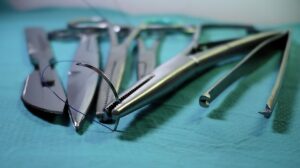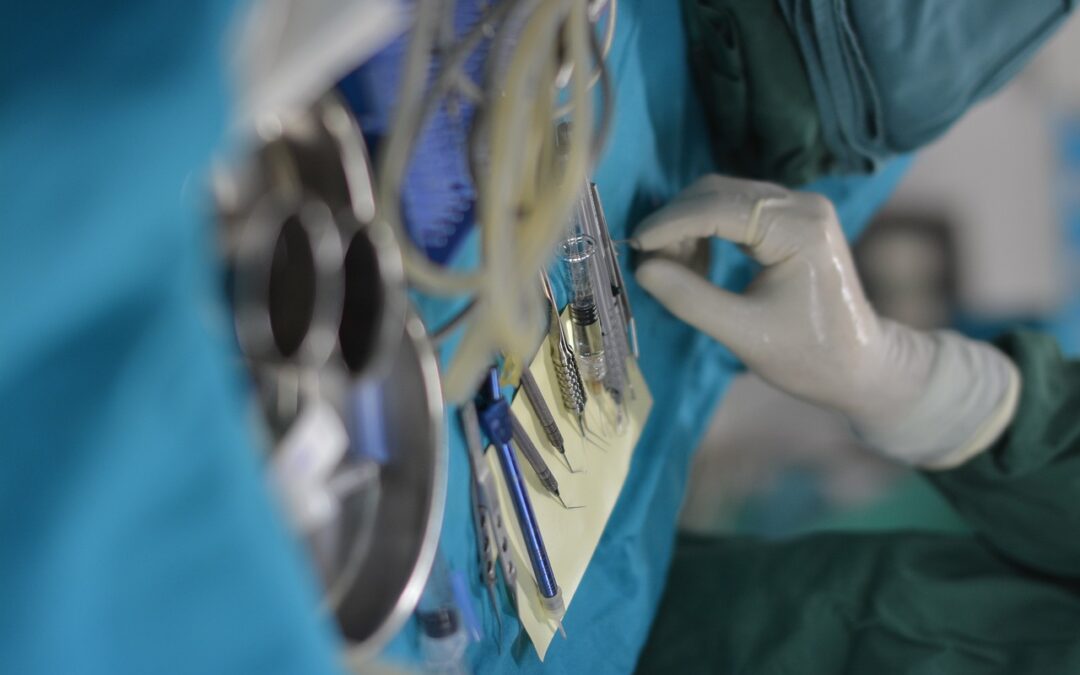In healthcare, the materials used serve as a vital influence on the quality of care for patients and the costs they pay. Modern medical device manufacturing advancements hinge primarily on the revolution of polymer resins.
Polymer resins are a class of synthetic organic compounds. In manufacturing, it’s polymer resins adaptability for complex shaping that makes them a viable component. As polymer science evolves, the medical industry is increasingly leveraging its power.
Let’s dive deeper into the role of polymer resins in the medical field.
Types of Polymer Resins Used in Medical Devices
While there are many polymer resins, these are the ones you’re most likely to find supporting the design of widely used medical devices.
- Nylon 6
- Nylon 66
- PBT (polybutylene terephthalate)
- Polycarbonates
- Polyurethanes
- Polyesters
- Polyvinyl chloride (PVC)
- Polyethylene
- Polystyrene
- Specialty polymers (e.g., PEEK, PTFE)
Why Polymer Resins? The Benefits
To learn more about polymers, visit our introduction to polymer resins guide. Below are some of the core benefits of using polymers in medical devices.
They Are Light, Adaptable
Polymer resins are uniquely versatile and applicable to a wide array of production, particularly involving the medical field.
For starters, polymer resins are lightweight options. They are generally a lighter option when compared to metals, ceramics, or glass. This makes them easier to transport and wear.
Their adaptability is another substantial benefit of polymer resins. They can be formulated to fit particular, complex designs across numerous medical applications.
They are Biocompatible, Resist Corrosion
Most polymer resins offer a biocompatible state, so they don’t react with skin. This makes them perfect for implants into the human body or applications that touch the skin. Many metals cause allergic reactions to the skin, another reason many medical devices leverage polymer resins.
They’re also a durable option that resists corrosion. Many metals tend to corrode when exposed to bodily fluids.
They are Flexible
We talk about the flexibility of polymer resins a lot around these parts. And that’s fair, given how vital adaptability is in any manufacturing. However, flexibility is an essential component of medical device manufacturing. Wearables need to fit snugly and comfortable. This requires executing complex shapes during the manufacturing process. The use of injection molding helps produce these products at scale.
They are Cost-Effective
In many cases, polymers can be more cost-effective to produce and process than metals or ceramics. This greatly helps in mass production of devices.
They are Customizable
Engineers can create polymer resins that offer electrical conductivity, flexibility, or resistance to particular chemicals.
In summary, polymer resins offer myriad benefits in the production and sustainability of modern medical devices. The core reasons are their combination of adaptability, biocompatibility, durability, and affordability.
Applications of Polymer Resins in Medical Devices

So, where do we find polymer resins in specific medical devices? In short, the use cases are widespread. Here are several popular instances that you’ll likely be familiar with.
Polymers for Surgical Instruments and Medical Devices
The use of polymer resins in surgical instruments and medical devices is all around you, at least when you’re in a medical establishment such as a doctors office or a hospital.
Scalpel handles, forceps, and clamps are just a few examples of polymeric medical devices that benefit from the unique properties of polymer resins. These materials reduce the need for repeated sterilization, lower production costs, and offer enhanced durability compared to traditional metal tools.
Polymers for surgical instruments provide lightweight, corrosion-resistant alternatives that improve efficiency in operating rooms. Their flexibility also allows for ergonomic designs that enhance precision and comfort for surgeons.
Polymer Resins in Diagnostic Medical Devices
The casings for ultrasound machines, MRIs, and X-ray devices often use polymer resins to help with durability and create lighter housing. The lightweight aspect means they are easier to transport around a medical office or hospital. Catheters and endoscopes are other diagnostic devices that make use of polymer resins.
Polymers in Medical Delivery Systems
In this area, we think of medical devices such as insulin pens, inhalers, and transdermal patches.
Polymer Resins in Medical Implants
Polymers often replace metals in joint replacements due to their wear-resistance. Cardiovascular medical devices such as stents, pacemakers, and heart valves leverage polymers for their flexibility and biocompatibility.
Polymers in Dental Applications
Those popular dental fillings often use polymers due to their aesthetic appeal and durability. Other dental applications, such as braces and retainers, also use them.
As you can see, polymer resins are found in many areas of medical device manufacturing. Their biocompatibility and flexibility are the two leading attributes for medical manufacturers, leveraging them above metals and glass.
Key Areas of Polymer Use for Medical Device Innovations
Newer polymer resins are designed to minimize the body’s immune response which in turn can reduce inflammation. This is a big innovation as it can help with tissue integrations lowering the chances of the body rejecting the tissue.
Moreover, biodegradable polymers offer solutions for medical devices such as implants or drug delivery systems which dissolve within the body after they’ve served their purposes. This can eliminate a need for follow up surgeries.
In 2023, Małgorzata Oleksy, Klaudia Dynarowicz, and David Aebisher published research about advances in biodegradable polymers and biomaterials for medical applications. They discussed the use of polymers in implants, prostheses and tissue engineering. As part of this discussion, the point out that biodegradable polymers are extremely advantageous because they’ll degrade over time and are eventually replaced by the body’s natural tissues. This is a huge benefit for patients of a variety of surgery types and continue to help provide better medical outcomes with less follow surgeries.
The Growing Role of Polymeric Medical Devices in Healthcare
Polymeric medical devices are playing a bigger role than ever in modern healthcare, offering lightweight, durable, and skin-friendly alternatives to traditional materials like metals and ceramics. As medical technology moves forward, so does the demand for polymer resins that can be customized for specific needs—helping improve patient outcomes while keeping production efficient and cost-effective.
Advancements in Polymeric Medical Devices
In recent years, medical-grade polymers have gotten smarter and stronger, evolving to meet the high standards of modern healthcare.
New breakthroughs are making them more durable, resistant to chemicals, and even capable of breaking down safely after use in disposable medical applications, all of which open up exciting new possibilities.
Here are just a few ways these advanced polymers are shaping medical technology:
Biodegradable polymers for disposable medical devices and controlled drug delivery applications, offering sustainable solutions in healthcare.
Wearable medical devices made from soft, flexible polymers, improving comfort for patients using smart patches and biosensors.
High-performance polymers for surgical and diagnostic tools that can stand up to repeated sterilization without wearing down.
The Market Shift Toward Medical Polymers
With a growing emphasis on cost-effective, patient-friendly solutions, more medical manufacturers are ditching traditional materials in favor of high-performance polymer resins. These materials not only cut production costs but also enable more innovative designs—making medical tools more ergonomic, lightweight, and adaptable.
For example, medical tubing, prosthetic components, and external support devices now frequently use polymers because they offer durability, flexibility, and biocompatibility in healthcare applications. And with the rise of 3D printing in medical device manufacturing, customizable polymer resins are in higher demand than ever—fueling even more innovation in the industry.
The Future of Polymeric Medical Devices
Looking ahead, polymer science is showing no signs of slowing down. Scientists are developing self-healing and antimicrobial polymers, which could extend the lifespan of medical devices while cutting down on infection risks. Meanwhile, the industry is exploring sustainable, medical-grade resins to create eco-friendly, single-use devices without sacrificing performance.
As polymer resins become more advanced and widely adopted, they will continue to push the boundaries of medical device manufacturing—delivering safer, smarter, and more efficient solutions for the future of healthcare.
While the use of polymer resins in medical manufacturing has proven highly positive, there remain challenges in the industry. Heat sensitivity and chemical resistance are two leading challenges that polymer resin companies continue to face. However, this isn’t typically an issue for “out of the body” applications. Additionally, at Polymer Resources, we offer a variety of materials, including high-heat materials that withstand higher temperatures.
Sterilization methods, such as autoclaving, create high temperatures for sterilization purposes, and this can cause polymers to degrade or deform. Moreover, specific chemicals used in sterilization processes sometimes react poorly with polymers.
However, prospects remain good on all of these challenges as polymer resin suppliers and manufacturers continue to innovate their technology. The overall contributions of polymer resins to the medical manufacturing field have contributed to lowering costs, improving transportability, and assisting with modern design innovation for comfort and usability. Pure and straightforward: medical devices are much enhanced with polymers.

